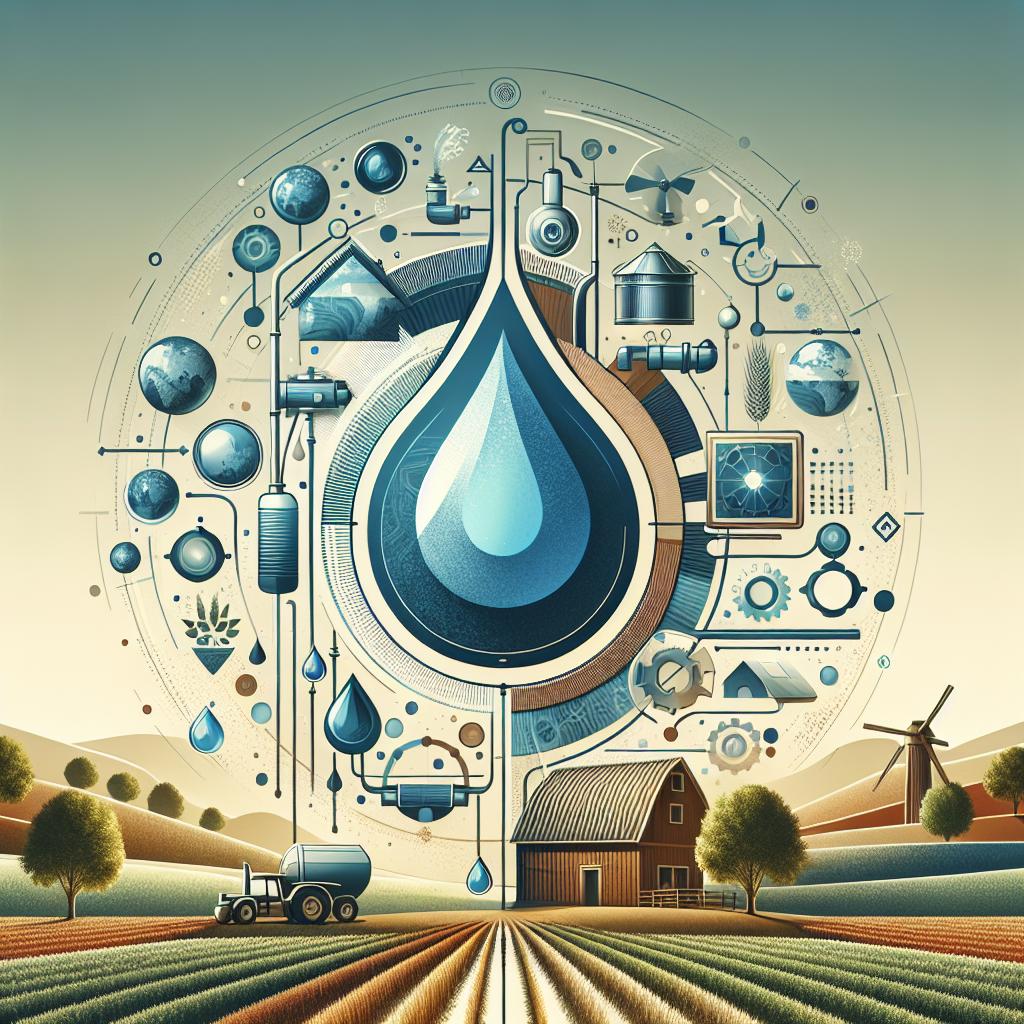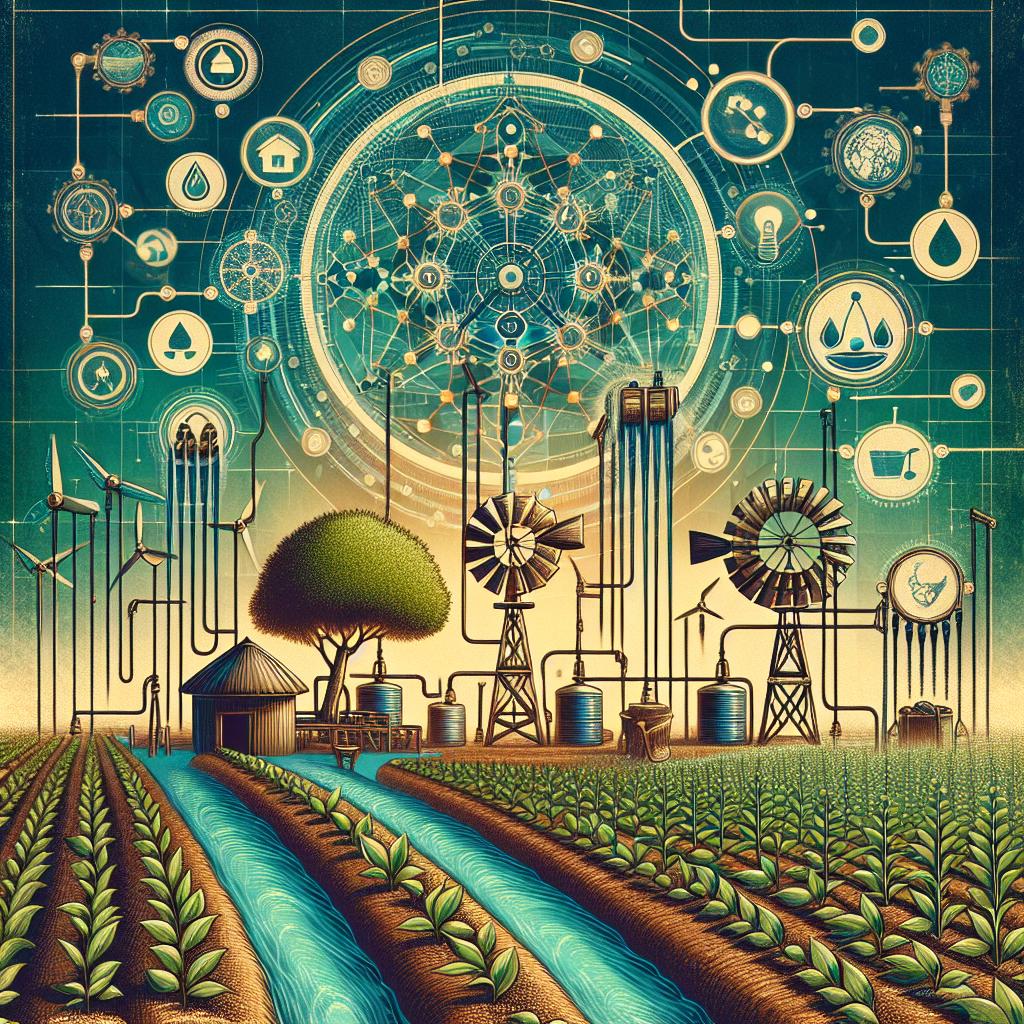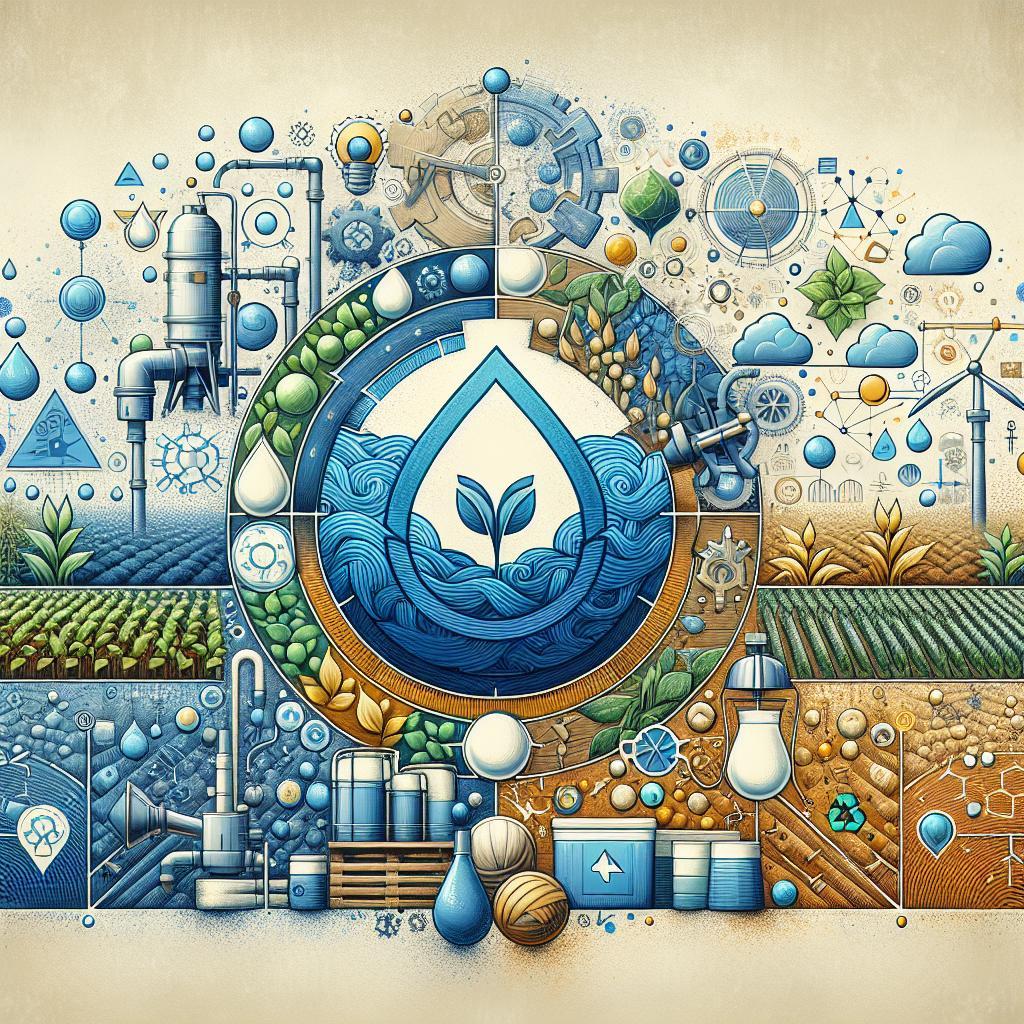This post may contain affiliate links which means I may receive a commission for purchases made through links. Learn more on my Private Policy page.
Introduction:
Welcome to the adventure of sustainable farming, where the sun shines brighter, the soil grows richer, and water—a precious lifeline for crops—can be sourced beyond traditional means. In an era where climate change and resource scarcity invite us to rethink our practices, the concept of alternative water sources is taking center stage. Picture a vibrant farm pulsing with life, where rain barrels, reclaimed water, and innovative greywater systems come together to quench the thirst of your flourishing plants.
In this article, we’ll explore how you can embrace creativity and practicality to incorporate alternative water sources into your farm’s irrigation strategy. Whether you’re a seasoned farmer or a budding agricultural enthusiast, the journey to adopting these refreshing methods promises not only to conserve water but also to enhance your farm’s resilience and productivity. So grab your watering can and let’s dive into the world of sustainable irrigation possibilities!
Exploring the Benefits of Alternative Water Sources for Your Farm
Integrating alternative water sources into your farming practices can lead to a multitude of benefits that go beyond mere irrigation. By adopting methods such as rainwater harvesting, recycling wastewater, or utilizing groundwater, farmers can enhance their operational resilience. Key advantages include:
- Cost Savings: Reduced dependence on conventional water sources can lower utility bills and improve your farm’s overall financial health.
- Sustainability: Using alternative sources supports environmentally friendly farming practices, helping to conserve precious resources.
- Efficiency in Water Use: Often, alternative sources can be tailored to meet specific crop needs, ensuring optimal growth while minimizing waste.
To implement these strategies effectively, growers should consider techniques such as constructing rainwater collection systems, purifying greywater, or drilling wells to access subterranean aquifers. An effective system can be established by choosing the right combination of methods that match your farm’s unique requirements. Here’s a simple overview of some alternative water sources:
| Water Source | Implementation Method | Benefits |
|---|---|---|
| Rainwater | Collection tanks & gutters | Natural irrigation & low cost |
| Greywater | Filtration & reuse systems | Reduced waste & irrigation boost |
| Groundwater | Well drilling | Reliable water source in drought |

Creative Solutions: Rainwater Harvesting Techniques for Sustainable Irrigation
Implementing rainwater harvesting for irrigation can transform the way you manage water resources on your farm. By capturing and storing rainwater, you not only reduce reliance on traditional water sources but also enhance the sustainability of your farming practices. Here are some innovative techniques to consider:
- Rain Gardens: Create depressions in the landscape which naturally collect rainwater, allowing it to seep into the ground and nourish plants.
- Rain Barrels: Install barrels at downspouts to collect runoff from rooftops, which can be used to water crops during dry spells.
- Cisterns: Construct larger storage tanks to hold collected rainwater, providing a reliable source for irrigation during drier months.
To maximize the benefits of rainwater harvesting, it’s crucial to implement systems that efficiently distribute the water to your crops. Below are some distribution methods that can be enhanced with rainwater:
| Method | Description |
|---|---|
| Drip Irrigation | Delivers water directly to the roots of plants, reducing waste and improving efficiency. |
| Soaker Hoses | Made from porous materials, these hoses can be laid along rows of crops to provide consistent moisture. |
| Sprinkler Systems | Designed to simulate rainfall, these systems can cover large areas effectively when using harvested rainwater. |

Harnessing the Power of Greywater: A Practical Guide for Farmers
Utilizing greywater in your agricultural practices can significantly enhance water efficiency and sustainability. This greywater, which is the relatively clean waste water from baths, sinks, and washing machines, can be redirected to irrigate crops, provided it is treated properly. To successfully harness this resource, consider implementing a systematic approach to greywater collection and filtration. You might adopt methods such as:
- Constructed Wetlands – Create natural filtration systems to treat greywater before use.
- Sand Filters – Utilize layers of sand and gravel to purify the water.
- Biofiltration Systems – Leverage biological processes to remove contaminants.
Once your greywater system is established, it’s essential to monitor water quality regularly to ensure it meets safety standards for irrigation. Farmers can also consider a crop selection strategy that aligns with greywater use, opting for plants that are more tolerant of potential contaminants. To aid in this, refer to the table below for some recommended crops that thrive with greywater irrigation:
| Crop | Water Tolerance Level |
|---|---|
| Tomatoes | High |
| Squash | Moderate |
| Sunflowers | High |
| Carrots | Moderate |

Integrating Drip Irrigation with Alternative Water Sources for Maximum Efficiency
Integrating drip irrigation with alternative water sources can significantly enhance the sustainability and productivity of your farm. By using methods such as rainwater harvesting, reclaimed wastewater, or even greywater systems, you can optimize your irrigation while reducing dependency on groundwater and municipal supplies. Begin by assessing the quality and quantity of available alternative water sources, considering factors such as:
- Water Quality: Ensure that the alternative source is suitable for crops.
- Soil Compatibility: Analyze how different water types affect soil health.
- Storage and Treatment: Implement systems for storage or treatment when necessary.
When designing your drip irrigation system, consider a combination of these resources to create a holistic approach. For example, you might incorporate a hybrid system that utilizes rainwater during the rainy season while relying on treated greywater for irrigation during dry spells. Below is a simple table to illustrate potential sources and their benefits:
| Alternative Water Source | Benefits |
|---|---|
| Rainwater Harvesting | Free source, reduces runoff, promotes sustainable practices |
| Reclaimed Wastewater | Reduces freshwater usage, nutrient-rich for plants |
| Greywater Systems | Maximizes resources from household, environmentally friendly |
By carefully integrating these water sources with your drip irrigation system, you can not only maximize efficiency but also contribute to the resilience and sustainability of your agricultural practices. This innovative approach fosters resource conservation, leading to a more environmentally friendly operation while ensuring that your crops receive the moisture they need for optimal growth.
Wrapping Up
As we wrap up our exploration of alternative water sources for farm irrigation, it’s clear that innovation and adaptability can go hand in hand with sustainability. By tapping into the vast potential of rainwater harvesting, greywater recycling, and even solar-powered desalination, farmers can not only alleviate the pressures of traditional water sources but also cultivate a greener future.
Picture your fields thriving under a gentle drizzle of harvested rain or irrigation from a creatively repurposed resource. Each step you take towards incorporating these alternatives not only enhances the resilience of your farm but also contributes positively to the environment, creating a ripple effect that echoes beyond your property lines.
So, don your gardening gloves and let your imagination run wild! Experiment with these practices, share your success stories with fellow farmers, and inspire others to join the movement toward sustainable agriculture. Remember, every drop counts, and together, we can foster a thriving ecosystem where nature and farming flourish side by side. Happy farming, and may your fields always be green and your water sources abundant! 🌱💧
This post may contain affiliate links which means I may receive a commission for purchases made through links. Learn more on my Private Policy page.

